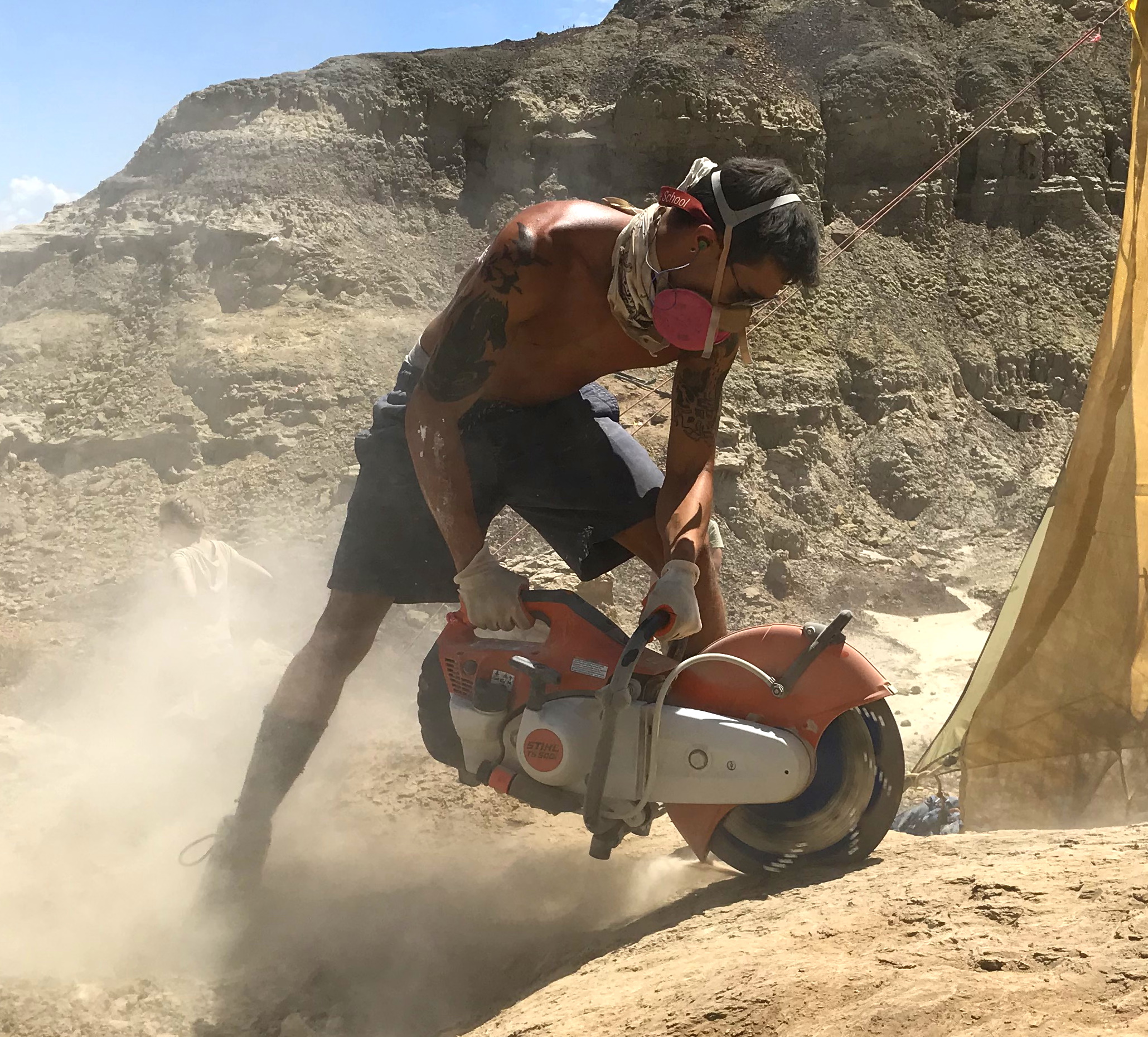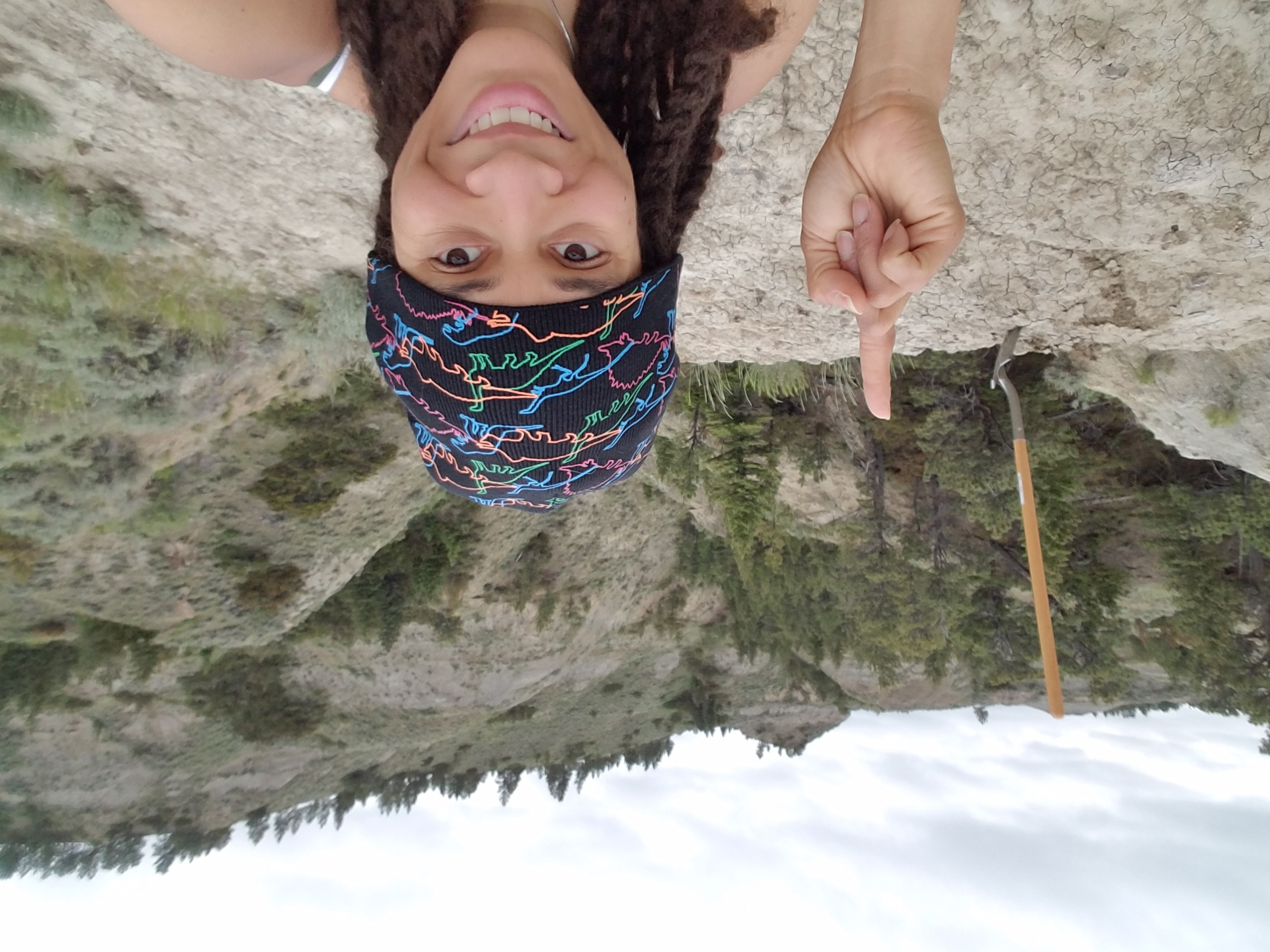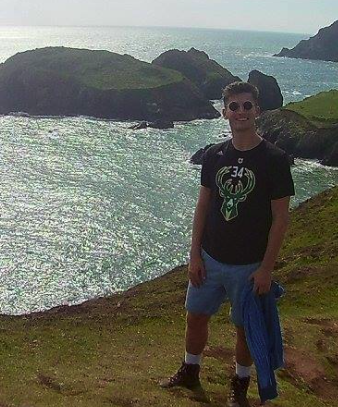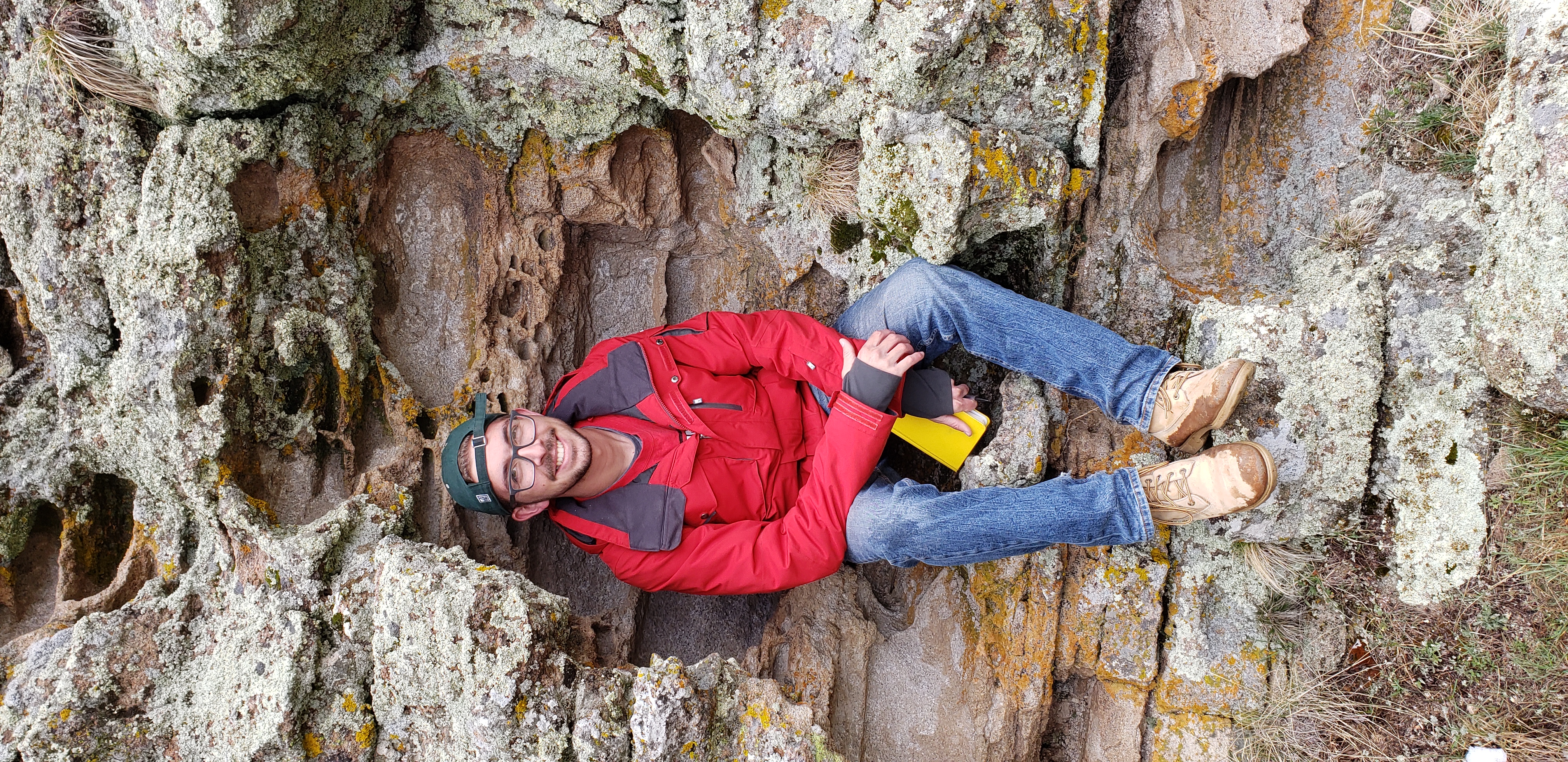
Haviv Avrahami
Resident PhD Student
Education
- M.S. in Biology, North Carolina State University, 2018
- B.S. in Geology, Appalachian State University, 2016
Research Interests
Haviv has a broad interest in the anatomy, paleobiology, ontogeny, and phylogeny of dinosaurs. He is passionate about engaging in opportunities to share paleontology with the public, specifically middle-school and high-school students from disenfranchised and underprivileged backgrounds. He hopes to present science as a tangible, realistic, and attainable career path for students with unconventional educational backgrounds, especially those facing adversity.
Selected Publications
- Zanno, Lindsay E., Ryan T. Tucker, Aurore Canoville, Haviv M. Avrahami, Terry A. Gates, and Peter J. Makovicky. "Diminutive fleet-footed tyrannosauroid narrows the 70-million-year gap in the North American fossil record." Communications biology 2, no. 1 (2019): 64.
- Avrahami, Haviv M., Terry A. Gates, Andrew B. Heckert, Peter J. Makovicky, and Lindsay E. Zanno. "A new microvertebrate assemblage from the Mussentuchit Member, Cedar Mountain Formation: insights into the paleobiodiversity and paleobiogeography of early Late Cretaceous ecosystems in western North America." PeerJ 6 (2018): e5883.
- Avrahami, Haviv Moshe. "Paleobiodiversity of a New Microvertebrate Locality from the Upper Cretaceous Mussentuchit Member, Cedar Mountain Formation, Utah: Testing Morphometric Multivariate Approaches for Quantifying Shape Variation in Microvertebrate Specimens." PhD diss., North Carolina State University, 2018.

Kyla Beguesse
Resident PhD Student
Education
- D.V.M. Tuskegee University, School of Veterinary Medicine, 2011
- M.S. in Small Ruminant Nutrition, Tuskegee University, 2009
- B.S. in Biology & Animal Science, Sam Houston St University, 2003
Research Interests
Dr. Kyla Beguesse is a board-certified veterinary anatomic pathologist with advanced training in exotic species and bone pathology, and current doctoral student at NC State University and NC Museum of Natural Sciences, working with Dr. Lindsay Zanno to develop a novel approach for identifying pathologic bone in extant and extinct archosaurian species.
Selected Publications
- Kristin O. Loria, DVM, Kyla A. Beguesse, MS, DVM, Audra Walsh, BVMS, Madhu P. Sirivelu, BVSc, PhD, DACVP. 2017. Pathology in Practice. J Am Vet Med Assoc 250(12):1387-1390.
- La’Toya V. Latney, DVM, Kyla Beguesse, MS, DVM, Alisa L. Newton, VMD, ACVP, and Bonnie L. Raphael, DVM, DACZM. 2017. Management of a Soft Tissue Sarcoma in a Bog Turtle (Glyptemys muhlenbergii). J Herpetol Med Surg 27(1/2):12-17.
- La’Toya V. Latney, DVM; Colin McDermott, VMD; Gregory Scott, MA, DVM; Maria M. Soltero-Rivera, DVM, DAVDC; Kyla Beguesse, MS, DVM; Melissa D. Sánchez, VMD, PhD, DACVP; and John R. Lewis, VMD, FAVD, DAVDC. 2016. Surgical management of maxillary and premaxillary osteomyelitis in a reticulated python (Python reticulatus). J Am Vet Med Assoc 248(9):1027–1033.

Josh Hedge
Resident PhD Student
Education
- M.S. in Geology, University of Birmingham (UK), 2016
- B.S. in Geology, University of Birmingham (UK), 2015
Research Interests
Josh's principle research interest is centered on massive dinosaur eggs, and in particular, the external ornamentation patterns seen on the eggshell of an enigmatic group of dinosaurs called oviraptorosaurs.
Selected Publications
- Hedge, Joshua & Shillito, Anthony & Davies, Neil & J. Butler, Richard & J. Sansom, Ivan. (2018). Invertebrate trace fossils from the Alveley Member, Salop Formation (Pennsylvanian, Carboniferous), Shropshire, UK. Proceedings of the Geologists Association. 10.1016/j.pgeola.2018.10.002.

Evan Jevnikar
Resident Master's Student
Education
- B.S. in Geology, University of Kansas, 2019
Research Interests
Even's primary research interests focus on tyrannosaur anatomy and ontogeny with special interest in dental variation during the growth stages of Tarbosaurus, an Asian cousin of T.rex. Tooth shape is important for understanding diet, therefore recognizing a change in tooth shape can help us understand how these dinosaurs changed their feeding style throughout their life history and possibly reduced competition within their environment.

